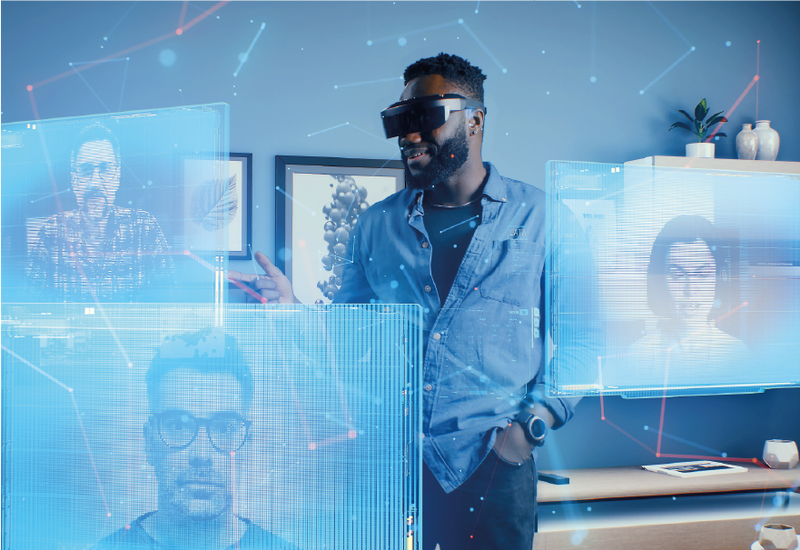Folge 1: Wie lernen wir? Praktische Einblicke aus der Lernwissenschaft (engl.)

By Kate Pasterfield
Recently, it has been my privilege to host a podcast mini-series with Professor Paul Howard-Jones, an educational neuroscientist at the University of Bristol.
Educational neuroscience is a field that studies brain activity during learning and seeks to understand the processes required for learning to occur.
By understanding these processes, learning experience designers and commissioners of training products gain collective insight to inform real-world design decisions.
But how do you translate complex learning science into easy-to-understand insight? In this first podcast episode, Paul and I discuss the science behind how we learn in a way that’s accessible and practical. Here's a summary of our conversation and you can access the podcast below.
Introducing the EBCs
The challenge of understanding how learning occurs isn’t so much about finding the science that explains it, but rather that we know so much it’s hard to know where to begin. For example, The Cambridge Handbook of Learning Sciences offers 36 academic articles on every subject from scaffolding, to project-based, to social learning, but it can be a challenge for the time-limited practitioner to distill and apply.
Fortunately, Paul Howard-Jones has come up with a digestible way to understand how people learn, which he shares in this first episode.
“I’ve found it useful to think about three categories of learning process... the first one is engagement, when a person’s attention is caught by an opportunity in which they can learn. The second category is building of knowledge – the very first instance when new knowledge is represented in the brain. But we know that this can be temporary, so we need a further set of processes which I refer to as consolidation, where that new knowledge becomes more permanent and accessible.”
Engagement – the gateway to learning
If a learner is not engaged, nothing is going to happen and an important concept for engagement is the reward system. Beneath the cortex, there are structures in the brain that are vital for our motivation to approach learning. There can be an increase in regions of the reward system that are proportional to how much we want to go forward and engage with something – an interesting problem-solving scenario or subject, for example.
But what activates our reward system? It's a scientific understanding that there are several elements: social rewards like praise, acknowledgement and sharing attention; extrinsic rewards like points and anticipation of points; and novelty.
Building knowledge – making meaningful representations
People need to pay conscious attention to new information, hold it in working memory and make connections between that information and what is already known. That means activating the frontal networks of the brain which are very important for working memory.
This requires effort which can only be sustained for a limited amount of time and with limited capacity. Because of the limitation of working memory, it’s important to be careful about distractions. If there is a lot of information that’s irrelevant – visual, auditory, or written – it can all add excessive load to working memory and prevent learning from happening.
To minimise cognitive load, concision, reducing extra visual stimulus, making connections between different representations (such as an image and an audio commentary), and building on what people already know, will all help the learner to make meaning of the information.
Consolidation – rehearsing knowledge
Consider the term ‘rehearsal’. In theatre, there are five different types of rehearsal that take place over several weeks. Each rehearsal is an opportunity to help actors learn their lines, and to refine the technical, lighting and costume decisions so that the play comes together as a united performance.
This is a helpful metaphor for workplace learning. Would we expect an actor to perform their lines perfectly after one read of the script? Probably not. Yet we often expect people at work to perform differently after very little opportunity to rehearse, and this is not helpful for learning.
New information must be consolidated to form durable, robust, long term knowledge that can be transferred.
To support consolidation, it’s important to apply new knowledge in different ways, and to practice retrieving it and adapting it to new situations.
How the EBCs inform learning experience design
The categories of engage, build, and consolidate are not a three-part methodology or model for learning design. In fact, they may be happening almost simultaneously. Rather, they highlight active processes in the brain that are necessary for learning to take place.
The key takeaway for learning experience creators is to keep engagement, knowledge building and consolidation front of mind when constructing a learning solution. Focus decisions on scientifically evidenced processes that support learning, and confidently cast aside outmoded, or poorly evidenced theories.
By fully embracing these concepts and applying learning science, practitioners gain new creative possibilities for crafting more effective workplace learning.